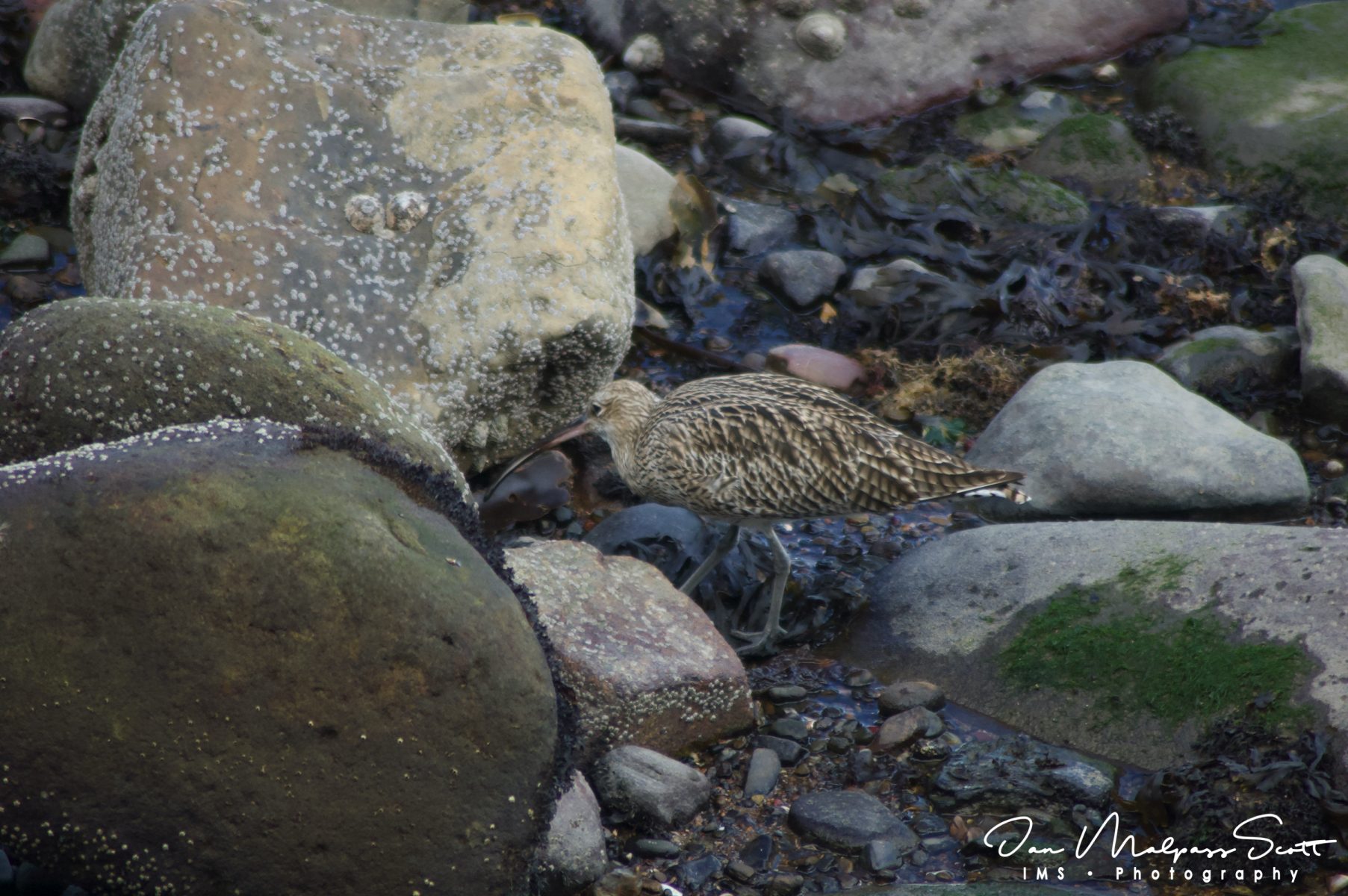A curlew on the exposed rocks of the Tyne, North Shields
The Eurasian curlew or common curlew (Numenius arquata) is a wader in the large family Scolopacidae. It is one of the most widespread of the curlews, breeding across temperate Europe and Asia. In Europe, this species is often referred to just as the “curlew”, and in Scotland known as the “whaup” in Scots.
This is the largest wader in its range, at 50–60 cm (20–24 in) in length, with an 89–106 cm (35–42 in) wingspan and a body weight of 410–1,360 g (0.90–3.00 lb). It is mainly greyish brown, with a white back, greyish-blue legs and a very long curved bill. Males and females look identical, but the bill is longest in the adult female. It is generally not possible to recognize the sex of a single Eurasian curlew, or even several ones, as there is much variation; telling male and female of a mated pair apart is usually possible however.
The familiar call is a loud curloo-oo.
The only similar species over most of the curlew’s range is the Eurasian whimbrel (N. phaeopus). The whimbrel is smaller and has a shorter bill with a kink rather than a smooth curve. Flying curlews may also resemble bar-tailed godwits (Limosa lapponica) in their winter plumages; however, the latter have a smaller body, a slightly upturned beak, and legs that do not reach far beyond their tail tips. The Eurasian curlew’s feet are longer, forming a conspicuous “point”.
The curlew exists as a migratory species over most of its range, wintering in Africa, southern Europe and south Asia. Occasionally a vagrant individual reaches places far from its normal range, such as Nova Scotia and the Marianas. It is present all year in the milder climates of Ireland and the United Kingdom and its adjacent European coasts.


